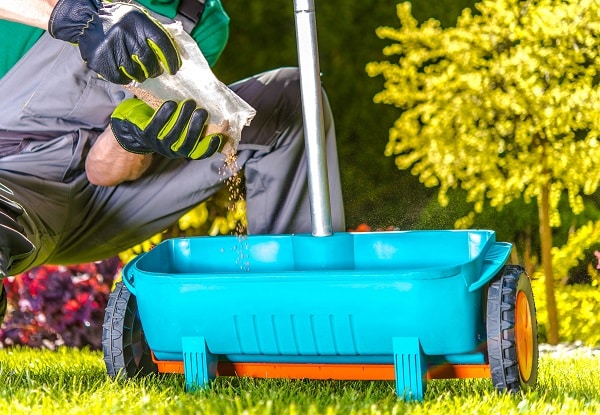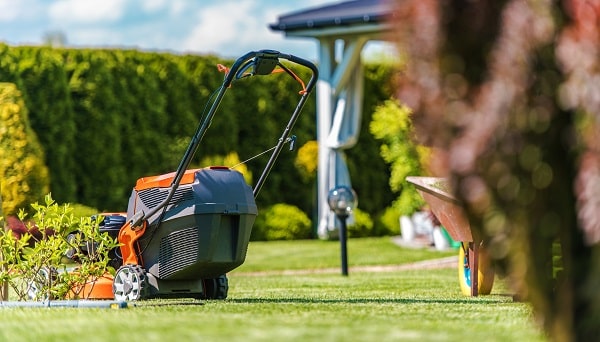A beautiful and well-manicured lawn can add an impressive aesthetic to your home or business property. A perfect lawn is not only visually appealing but can also improve the value of your property. However, achieving the perfect lawn takes effort, time, and knowledge. It requires dedication, patience, and a combination of different techniques. You must consider many factors, from seed selection to irrigation, soil preparation, and lawn maintenance, to ensure a healthy, green, and thriving yard. To help get you started, here are seven expert tips for growing the perfect lawn!
Contents
The Biggest Threats Facing Your Lawn
The biggest threats to the success of your lawn depend primarily on the natural elements in your environment. If you live in a dry sandy area, harsh drought is likely the biggest threat to your lawn’s health and growth. Similarly, if you live in a wet climate, excessive rain and humidity may cause healthy grasses to become diseased or otherwise impossible to maintain. Regardless of your region and climate, one consistent threat is over-maintenance and caretaking.
Giving too much attention to your lawn’s appearance can lead to overly frequent mowing cycles, which can cause sods to become unhealthy and susceptible to serious damage from molds, fungi, or pests. It’s important to strike a healthy balance between providing appropriate attention and care while also ensuring that there are periods of rest during which your grasses’ self-care processes can occur.
Tips For Growing The Perfect Lawn
Unfortunately, knowing the potential threats your lawn may face is insufficient. You’ll need to know how to prevent such problems and maintain the healthiest possible yard. To help you achieve the perfect lawn, here are seven expert tips:
Choose The Right Grass Seed
Choosing the right grass seed is the first step to achieving a perfect lawn. Not all grass seeds are equal, and different types of grasses have varying characteristics that determine their suitability for your lawn. Warm-season grasses, such as Bermuda grass, thrive in warm temperatures and are suitable for hot climates. In contrast, cool-season grasses, such as fescue, grow well in cooler temperatures and suit colder climates. The best way to determine which grass seed is best for your lawn is to consult your local nursery or lawn expert.
Additionally, you should consider your lawn’s sun and shade requirements when choosing a grass seed. If your lawn receives a lot of sunlight, you may need a drought-tolerant grass seed that can handle heat stress. On the other hand, if you have a shaded lawn, you may need a grass seed that can handle low light levels and has better disease resistance.
Soil Preparation
The key to a healthy lawn is healthy soil. Preparing your soil for seeding or sodding is essential for the success of your lawn. Soil testing is an excellent way to determine your soil’s pH level, nutrient content, and organic matter. Once you understand the composition of your soil, you can amend it as necessary to ensure your lawn thrives.
Amending your soil can include adding organic matter, such as compost or peat moss, to improve the soil’s structure and nutrient content. You may also need to add lime to adjust the soil’s pH level. An ideal pH range for most lawns is between 6.0 and 7.0. By preparing your soil before planting, you’ll set your lawn up for success.
Proper Watering
Watering your lawn the right amount and at the right time of day can be the difference between a lush, green lawn and a dull, dry one. It’s best to water your lawn deeply and infrequently rather than frequently and shallowly. When you water your lawn deeply, the roots will grow deeper into the soil, making them more resilient to drought conditions.
The best time to water your lawn is between 6 am and 10 am. Watering during the hottest part of the day can cause water to evaporate quickly, and watering at night can increase the likelihood of disease. You should aim to water your lawn for about 30 minutes, two to three times per week, depending on the type of grass and the climate.
Fertilization
Fertilization is another important factor in growing a perfect lawn. Fertilizers provide essential nutrients your lawn needs to grow, including nitrogen, phosphorus, and potassium. The right fertilizer and application schedule can help your lawn thrive and resist diseases and pests.
Remember, it is best to fertilize your lawn at the right time of year, depending on the type of grass and the climate. A soil test can help determine the type and amount of fertilizer your lawn needs. It would be best to be careful not to over-fertilize your lawn, as this can cause damage to the grass and surrounding plants.
Aeration
Aeration is the process of perforating the soil with small holes to allow air, water, and nutrients to penetrate the grass roots. Aeration can help relieve soil compaction, reduce thatch buildup, and promote a healthy root system. Aeration is particularly beneficial in areas with heavy foot traffic or lawns with heavy clay soils.
There are two primary types of aeration: core aeration and spike aeration. Core aeration is generally more effective, allowing for better water and nutrient penetration. Core aeration involves removing small plugs of soil from the lawn, while spike aeration involves poking holes in the soil without removing any soil.
Weed And Pest Control
Weeds and pests can quickly take over your lawn, suffocating your grass and making your lawn less attractive. Therefore, it is important to implement proper weed and pest control measures to keep your lawn looking its best. It’s best to use an integrated approach to weed and pest control, including lawn maintenance, watering, and fertilization.
If you notice weeds or pests in your lawn, it’s best to address the problem immediately. Many natural and chemical treatments are available for weed and pest control, so it’s important to choose the right one for your lawn and situation.
Proper Maintenance
Proper maintenance is essential for a perfect lawn. This includes mowing, edging, and trimming. It’s important to mow your lawn regularly and to maintain the proper mowing height for your type of grass. Cutting your grass too short can damage the roots and make your lawn susceptible to pests and disease. Edging your lawn will give it a neat and polished appearance, and trimming will keep any overgrown areas looking tidy.
In addition to regular mowing, removing any debris from your lawn, such as leaves or branches, is essential. This will prevent thatch buildup and allow your lawn to breathe. Finally, regular lawn inspections can help identify problems before they become too severe.
Growing The Perfect Lawn Is Simple!
Growing the perfect lawn requires understanding the different factors that affect your lawn’s health and appearance. Understanding these factors will give you insight into the best practices for keeping your lawn looking its best. From choosing the right grass seed to regular maintenance, following these tips will ensure your lawn looks great for years. And if you need a little extra help, don’t forget to seek out the assistance of a professional lawn care service!






